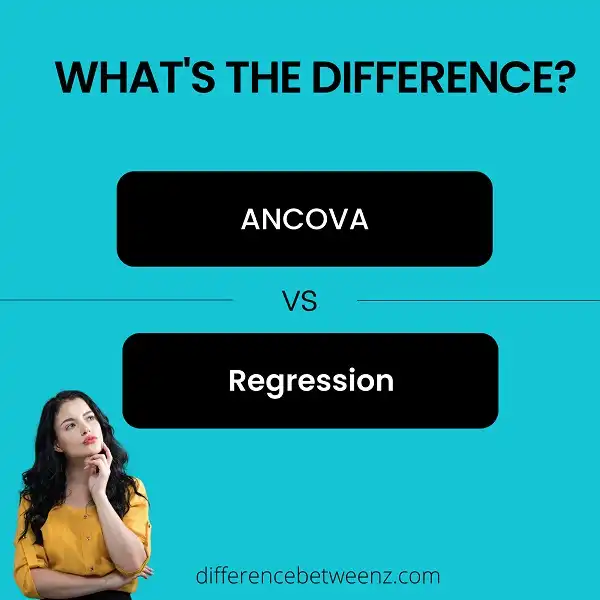Ancova and regression are two common types of statistical analysis used in research. They both have different purposes, and it is important to understand the difference between them in order to select the right one for your data. In this article, we will discuss the basics of each method, as well as when to use them.
What is ANCOVA?
An ANCOVA is a statistical procedure that stands for Analysis of Covariance. ANCOVA is used to test the equality of two or more population means when there are one or more nuisance variables present. A nuisance variable is a variable that is not of primary interest to the researcher but needs to be controlled for in order for valid inferences to be made about the primary variable(s) of interest. An example of a nuisance variable would be gender, which is often controlled for in educational research studies. ANCOVA can be used with both continuous and categorical variables. When using ANCOVA, it is important to ensure that the assumptions of normality and homogeneity of variance are met. If these assumptions are not met, then the results of ANCOVA may be invalid.
What is Regression?
Regression is a statistical technique used to predict the value of a dependent variable, based on the values of one or more independent variables. The dependent variable is the variable that is being predicted, while the independent variables are the variables that are used to make the prediction. In regression analysis, the dependent variable is usually denoted by y, and the independent variables are denoted by x1, x2,…. Regression analysis can be used to predict future values of the dependent variable, or to understand how the dependent variable varies as a function of the independent variables. Regression analysis can be used with any type of data, but it is most commonly used with numerical data. Regression analysis is a powerful tool that can be used to improve our understanding of the world around us.
Difference between ANCOVA and Regression
ANCOVA and regression are two statistical techniques that are often used to analyze data. Both methods can be used to identify relationships between variables, but there are some key differences between them. ANCOVA is typically used when there is one continuous dependent variable and one or more categorical independent variables. In contrast, regression is typically used when there is one continuous dependent variable and one or more continuous independent variables.
ANCOVA is also generally more robust than regression, meaning that it is less likely to produce inaccurate results. As a result, ANCOVA is often the preferred method when analyzing data. However, regression may be more appropriate in some situations, such as when the dependent variable is not normally distributed. Ultimately, the choice of statistical technique depends on the specific data set and the research question being investigated.
Conclusion
In this blog post, we’ve explored the difference between ANCOVA and regression. We looked at when each is appropriate and how to conduct each analysis.


